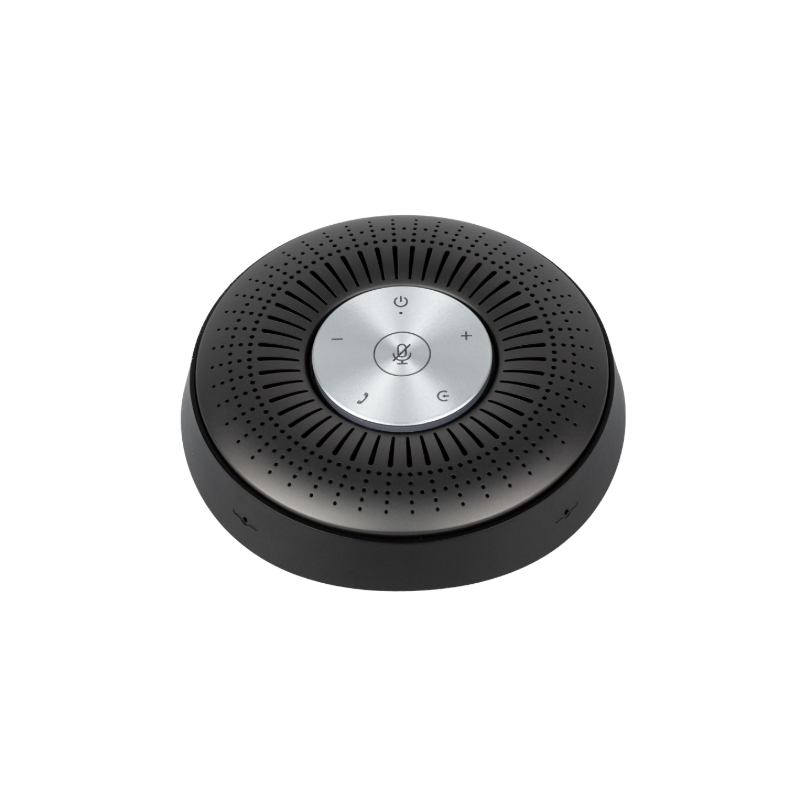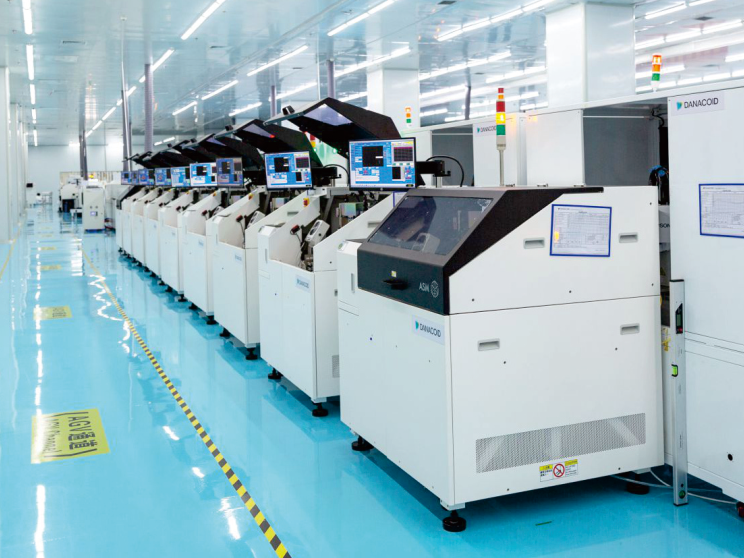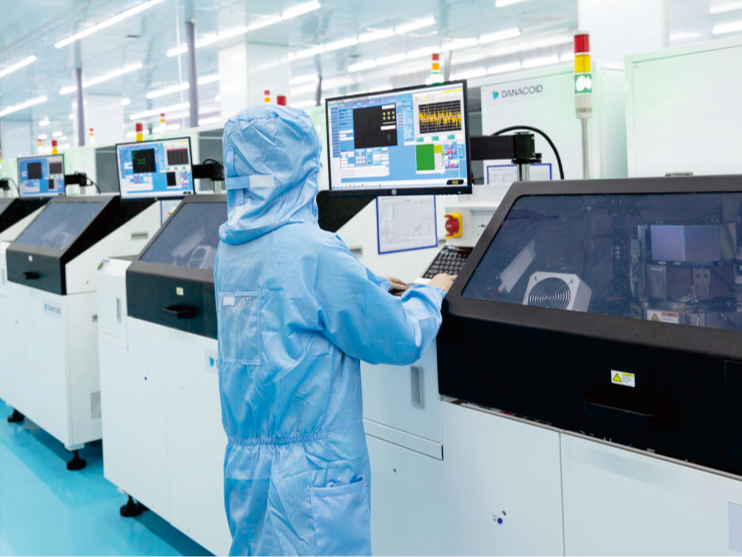오디오 처리 시스템은 소리를 분석, 향상 또는 재생할 수 있는 형식으로 변환합니다. 이는 음악 제작, 음성 인식 및 라이브 사운드 강화와 같은 응용 프로그램에서 중요한 역할을 합니다. 시스템은 네 가지 주요 구성 요소에 의존합니다: 오디오 입력 장치, 오디오 전처리, 오디오 처리 장치 및 출력 장치. 각 부분은 고유한 목적을 가지고 있지만, 원활하게 함께 작동해야 합니다. 이러한 협업은 정확한 소리 캡처, 효과적인 처리 및 고품질 출력을 보장합니다. 이러한 구성 요소를 이해하면 오디오 시스템이 어떻게 선명하고 몰입감 있는 사운드 경험을 제공하는지 감상할 수 있습니다.
오디오 입력 장치
오디오 입력 장치는 모든 오디오 처리 시스템의 시작점 역할을 합니다. 이러한 장치는 환경이나 다른 소스에서 소리를 캡처하고 이를 추가로 처리할 수 있는 형식으로 변환합니다. 이러한 장치의 역할을 이해하면 소리가 시스템에 어떻게 들어오고 주요 구성 요소를 통해 여정을 시작하는지 감상할 수 있습니다.
마이크
마이크는 가장 일반적인 오디오 입력 장치 중 하나입니다. 그들은 음파를 포착하고 이를 전기 신호로 변환하여 녹음, 방송 및 라이브 공연에 필수적입니다.
마이크의 종류(예: 다이나믹, 콘덴서, 리본)
마이크는 각각 특정 용도에 맞게 설계된 다양한 종류가 있습니다. 다이나믹 마이크는 내구성이 뛰어나고 높은 음압 수준을 처리할 수 있어 라이브 공연에 적합합니다. 콘덴서 마이크는 더 민감하고 세밀한 오디오를 포착하여 스튜디오 녹음에 완벽합니다. 따뜻하고 자연스러운 사운드로 알려진 리본 마이크는 종종 전문 환경에서 보컬이나 어쿠스틱 악기를 녹음하는 데 사용됩니다.
마이크가 음파를 전기 신호로 변환하는 방법
마이크는 소리 파동을 전기 신호로 변환하여 작동합니다. 소리 파동이 마이크의 다이어프램에 닿으면 진동합니다. 이러한 진동은 전기 회로의 변화를 만들어 원래 소리를 나타내는 신호를 생성합니다. 이 과정은 소리가 정확하게 캡처되어 추가 처리에 사용될 수 있도록 보장합니다.
기타 입력 장치
마이크가 널리 사용되지만, 다른 입력 장치들도 오디오 시스템에서 중요한 역할을 합니다. 이러한 장치는 시스템에 다양한 유형의 오디오 신호를 도입할 수 있게 해줍니다.
라인 입력(예: 악기, 믹서)
라인 입력은 외부 오디오 소스를 시스템에 직접 연결합니다. 전기 기타나 키보드와 같은 악기는 신호를 처리하기 위해 라인 입력 연결을 사용합니다. 여러 오디오 신호를 결합하는 믹서도 라인 입력을 통해 출력을 시스템에 공급하는 데 의존합니다. 이러한 연결은 다양한 오디오 소스가 원활하게 통합될 수 있도록 보장합니다.
디지털 오디오 소스(예: 미리 녹음된 파일, 스트리밍)
디지털 오디오 소스는 시스템에 직접적으로 사전 녹음된 또는 실시간 스트리밍된 오디오를 제공합니다. 컴퓨터나 모바일 장치에 저장된 파일과 스트리밍 플랫폼은 디지털 형식으로 오디오를 전달합니다. 이러한 소스는 아날로그-디지털 변환의 필요성을 우회하여 추가 처리를 위한 고품질 입력을 보장합니다.
오디오 전처리
오디오 전처리는 원시 오디오 신호를 추가 분석 또는 처리를 위해 준비합니다. 이 단계는 오디오 데이터가 깨끗하고 최적화되어 있으며 다양한 응용 프로그램에서 사용할 준비가 되어 있음을 보장합니다. 신호 조정, 샘플링, 양자화 및 특징 추출에 집중함으로써 오디오 신호의 품질과 사용성을 향상시킬 수 있습니다.
신호 조정
신호 조정은 잡음 및 불균형과 같은 문제를 해결하여 오디오 신호의 품질을 향상시킵니다. 이 단계는 입력 신호가 명확하고 후속 처리에 적합하도록 보장합니다.
잡음 감소 및 필터링
노이즈 감소는 오디오 신호에서 원치 않는 소리를 제거합니다. 배경 소음, 전기 간섭 또는 환경 방해는 오디오 품질을 저하시킬 수 있습니다. 저역 통과, 고역 통과 또는 대역 통과 필터와 같은 필터는 관련 없는 주파수를 제거하면서 원하는 주파수를 분리하는 데 도움을 줍니다. 이러한 기술을 사용하여 오디오 신호가 깨끗하고 집중된 상태를 유지할 수 있습니다.
이퀄라이제이션 및 게인 조정
이퀄라이제이션은 오디오 신호의 다양한 주파수 구성 요소의 균형을 조정합니다. 특정 주파수를 강조하거나 줄여 원하는 음색을 얻을 수 있습니다. 게인 조정은 신호의 진폭이 최적 범위 내에 유지되도록 보장합니다. 이 단계는 왜곡을 방지하고 오디오 전반에 걸쳐 일관된 볼륨 수준을 보장합니다.
샘플링 및 양자화
샘플링 및 양자화는 아날로그 오디오 신호를 디지털 형식으로 변환합니다. 이 과정은 디지털 도구를 사용하여 오디오를 저장, 분석 및 조작할 수 있게 해줍니다.
샘플링 속도 및 비트 깊이
샘플링 속도는 오디오 신호가 초당 얼마나 자주 측정되는지를 결정합니다. 더 높은 샘플링 속도는 더 많은 세부 정보를 캡처하여 더 나은 오디오 품질을 제공합니다. 비트 깊이는 각 샘플의 해상도를 정의합니다. 더 큰 비트 깊이는 더 넓은 다이내믹 범위를 제공하여 오디오의 미세한 세부 사항을 보존합니다. 올바른 샘플링 속도와 비트 깊이를 선택하면 원래 소리의 정확한 디지털 표현을 보장합니다.
앨리어싱 방지 필터의 중요성
앨리어싱 방지 필터는 샘플링 과정에서 왜곡을 방지합니다. 샘플링 속도가 너무 낮으면 고주파 성분이 앨리어싱으로 알려진 아티팩트를 생성할 수 있습니다. 이러한 필터는 나이퀴스트 한계를 초과하는 주파수를 제거하여 샘플링된 오디오가 원래 신호에 충실하도록 보장합니다. 앨리어싱 방지 필터를 사용하면 디지털화 과정에서 오디오의 무결성을 유지하는 데 도움이 됩니다.
특징 추출
특징 추출은 오디오 신호의 주요 특성을 식별합니다. 이러한 특징은 음성 인식, 음악 분석 및 기계 학습 응용 프로그램과 같은 작업에 필수적입니다.
스펙트럼 분석(예: FFT, 스펙트로그램)
스펙트럼 분석은 오디오 신호를 주파수 성분으로 분해합니다. 빠른 푸리에 변환(FFT) 및 스펙트로그램과 같은 기술은 주파수가 시간에 따라 어떻게 변화하는지를 시각화합니다. 이러한 도구는 오디오의 구조를 이해하고 패턴이나 이상을 식별하는 데 도움을 줍니다.
기계 학습 모델을 위한 주요 특징(예: MFCC)
기계 학습 모델은 훈련 및 추론을 위해 특정 오디오 특징에 의존합니다. 멜 주파수 켑스트럼 계수(MFCC)는 음성 및 오디오 인식 작업에서 널리 사용됩니다. 이러한 특징은 소리의 지각적 측면을 포착하여 음성 비서나 음악 분류와 같은 응용 프로그램에 이상적입니다. 올바른 특징을 추출하는 것은 모델이 효과적으로 작동하도록 보장합니다.
오디오 처리 장치
오디오 처리 유닛은 오디오 신호를 변환하고 향상시키는 핵심 작업을 처리합니다. 이러한 유닛은 여러분이 듣는 소리를 형성하는 복잡한 작업을 실행합니다. 이들은 하드웨어 구성 요소, 인공지능 모델 및 소프트웨어 도구를 포함합니다. 각각은 고품질 오디오 출력을 보장하는 데 중요한 역할을 합니다.
디지털 신호 프로세서 (DSP)
디지털 신호 프로세서 (DSP)는 실시간 오디오 처리를 위해 설계된 특수 하드웨어입니다. 이들은 높은 속도로 계산을 수행하여 즉각적인 결과가 필요한 응용 프로그램에 필수적입니다.
실시간 오디오 처리에서 DSP의 역할
DSP는 오디오 신호를 정밀하고 빠르게 처리합니다. 이들은 필터링, 이퀄라이제이션 및 다이내믹 레인지 제어와 같은 작업을 처리합니다. 라이브 사운드 시스템에서 DSP는 오디오 조정이 즉시 이루어지도록 하여 지연을 방지합니다. 라이브 공연이나 방송 중에 오디오 품질을 유지하기 위해 DSP를 신뢰할 수 있습니다.
일반적인 DSP 알고리즘 (예: 압축, 리버브)
DSP는 알고리즘을 사용하여 오디오 신호를 수정합니다. 압축은 오디오의 다이내믹 범위를 줄여서 큰 소리와 작은 소리를 균형 있게 만듭니다. 리버브는 오디오에 깊이와 공간을 추가하여 콘서트 홀이나 작은 방과 같은 환경을 시뮬레이션합니다. 이러한 알고리즘은 특정 요구에 맞게 소리를 형성하여 청취 경험을 향상시킵니다.
AI 및 머신 러닝 모델
인공지능(AI) 및 머신 러닝 모델은 오디오 처리에 혁신을 가져왔습니다. 이들은 시스템이 이전에는 불가능했던 방식으로 오디오 데이터를 분석하고 적응할 수 있게 합니다.
오디오 처리에서 AI의 응용 프로그램(예: 음성 인식, 소음 제거)
AI는 음성 인식 및 소음 제거와 같은 응용 프로그램을 지원합니다. 음성 인식 시스템은 말한 단어를 텍스트로 변환하여 음성 비서 및 전사 서비스가 가능하게 합니다. 소음 제거는 원치 않는 배경 소음을 제거하여 통화나 녹음의 선명도를 향상시킵니다. 이러한 기술은 정확하고 효율적인 결과를 제공하기 위해 AI에 의존합니다.
오디오 모델의 훈련 및 추론
머신 러닝 모델은 효과적으로 작동하기 위해 훈련이 필요합니다. 훈련 중에 모델은 대규모 오디오 데이터셋에서 패턴을 학습합니다. 훈련이 완료되면 모델은 새로운 오디오 데이터를 처리하기 위해 추론을 사용합니다. 예를 들어, 음성 인식 모델은 훈련을 기반으로 말한 단어를 식별합니다. 이 과정을 이해하면 AI가 오디오 시스템을 어떻게 향상시키는지 이해하는 데 도움이 됩니다.
소프트웨어 기반 처리
소프트웨어 기반 처리는 오디오 처리에서 유연성과 접근성을 제공합니다. 디지털 도구를 사용하여 오디오 신호를 조작하고 향상시킬 수 있습니다.
DAW(디지털 오디오 워크스테이션) 및 플러그인
디지털 오디오 워크스테이션(DAW)은 오디오를 녹음, 편집 및 믹싱하기 위한 소프트웨어 플랫폼입니다. 다중 트랙 편집 및 사운드 디자인과 같은 작업을 위한 도구를 제공합니다. 플러그인은 이퀄라이제이션이나 리버브와 같은 효과를 추가하여 DAW의 기능을 확장합니다. DAW와 플러그인을 사용하여 전문 품질의 오디오 프로젝트를 만들 수 있습니다.
클라우드 기반 오디오 처리
클라우드 기반 오디오 처리는 로컬 하드웨어에 의존하지 않고 오디오 프로젝트를 작업할 수 있게 해줍니다. 이러한 서비스는 원격 서버에서 오디오 데이터를 처리하여 확장성과 편리함을 제공합니다. 예를 들어, 클라우드 플랫폼을 사용하여 오디오 파일을 편집하거나 고급 효과를 적용할 수 있습니다. 이 접근 방식은 협업을 간소화하고 강력한 로컬 시스템의 필요성을 줄여줍니다.
출력 장치
출력 장치는 최종 오디오를 청취자에게 전달하는 데 중요한 역할을 합니다. 이러한 장치는 처리된 오디오 신호를 소리 또는 다른 사용 가능한 형식으로 변환합니다. 그들의 기능을 이해하면 오디오 처리 요구에 맞는 올바른 도구를 선택하는 데 도움이 됩니다.
연설자
스피커는 전기 신호를 들을 수 있는 소리로 변환하는 필수 출력 장치입니다. 이들은 전문 스튜디오부터 홈페이지 엔터테인먼트 시스템에 이르기까지 다양한 환경에서 널리 사용됩니다.
스피커의 종류(예: 스튜디오 모니터, 소비자 등급)
스피커는 각각 특정 용도로 설계된 다양한 유형이 있습니다. 스튜디오 모니터는 정확한 사운드 재현을 제공하여 오디오 믹싱 및 마스터링에 이상적입니다. 이들은 색깔 없이 모든 세부 사항을 들을 수 있도록 보장합니다. 반면 소비자용 스피커는 더 즐거운 청취 경험을 위해 향상된 베이스와 트레블을 우선시합니다. 이러한 스피커는 일반적으로 홈 시어터나 개인 오디오 설정에서 사용됩니다.
스피커가 전기 신호를 소리 파동으로 변환하는 방법
스피커는 전기 신호를 소리 파동으로 변환하여 작동합니다. 전기 신호는 코일을 통과하면서 자기장을 생성합니다. 이 자기장은 다이어프램에 부착된 자석과 상호작용합니다. 다이어프램이 진동하여 원래 오디오 신호와 일치하는 소리 파동을 생성합니다. 이 과정은 당신이 듣는 오디오가 처리된 신호의 충실한 재현임을 보장합니다.
헤드폰
헤드폰은 오디오를 경험하는 개인적이고 휴대 가능한 방법을 제공합니다. 오디오 편집이나 캐주얼 청취와 같이 정밀함이나 프라이버시가 필요한 상황에서 필수적입니다.
오픈백 대 클로즈드백 헤드폰
헤드폰은 오픈백 디자인과 클로즈드백 디자인으로 분류됩니다. 오픈백 헤드폰은 이어컵을 통해 공기가 통과할 수 있어 자연스럽고 넓은 사운드를 생성합니다. 이들은 조용한 환경에서 비판적인 청취에 적합합니다. 반면 클로즈드백 헤드폰은 외부 소음을 차단하고 소리 유출을 방지합니다. 이 디자인은 녹음 세션이나 시끄러운 환경에 적합합니다.
오디오 처리에서 헤드폰의 사용 사례
헤드폰은 오디오 처리에서 다양한 용도로 사용됩니다. 전문가들은 녹음이나 믹싱 중 모니터링을 위해 사용합니다. 이들은 스피커에서는 놓칠 수 있는 미세한 디테일을 감지하는 데 도움을 줍니다. 캐주얼 사용자에게 헤드폰은 음악, 팟캐스트 또는 게임을 위한 몰입감 있는 청취 경험을 제공합니다.
기타 출력 방법
스피커와 헤드폰 외에도 다른 출력 방법은 오디오 전달에서 유연성과 호환성을 보장합니다.
디지털 출력(예: 파일 형식, 스트리밍)
디지털 출력은 다양한 형식으로 오디오를 저장하거나 전송할 수 있게 해줍니다. MP3, WAV 또는 FLAC와 같은 파일 형식은 품질과 파일 크기를 균형 있게 맞추어 다양한 요구를 충족합니다. 스트리밍 플랫폼은 인터넷을 통해 청취자에게 직접 오디오를 전달합니다. 이러한 방법은 품질을 저하시키지 않으면서 오디오가 넓은 청중에게 도달하도록 보장합니다.
비디오 또는 다른 미디어와의 동기화
오디오는 종종 비디오 또는 다른 미디어와 함께 제공됩니다. 동기화는 오디오가 시각적 요소와 완벽하게 일치하도록 보장합니다. 이는 영화 제작, 라이브 방송 또는 멀티미디어 프레젠테이션과 같은 응용 프로그램에서 매우 중요합니다. 적절한 동기화는 전체 경험을 향상시켜 콘텐츠를 더 매력적이고 전문적으로 만듭니다.
오디오 처리 시스템의 주요 구성 요소를 이해하면 입력에서 출력으로 소리가 어떻게 변환되는지에 대한 명확한 그림을 얻을 수 있습니다. 각 구성 요소—입력 장치, 전처리 유닛, 처리 유닛, 출력 장치—는 중요한 역할을 합니다. 이 부분들은 원활한 오디오 캡처, 처리 및 전달을 보장하기 위해 함께 작동합니다. 그들의 상호 의존성을 인식함으로써, 고품질 오디오 경험을 창출하는 방법을 이해할 수 있습니다. 당신이 전문가이든 열광자이든, 이러한 구성 요소를 마스터하는 것은 오디오 시스템을 효과적으로 다룰 수 있는 능력을 향상시킵니다.









